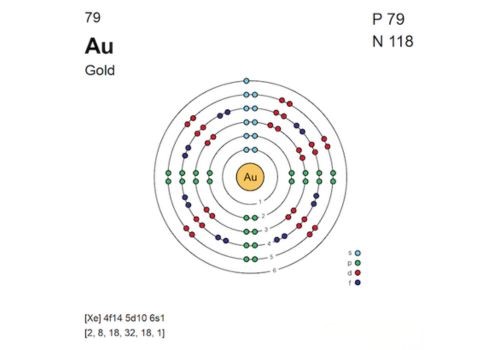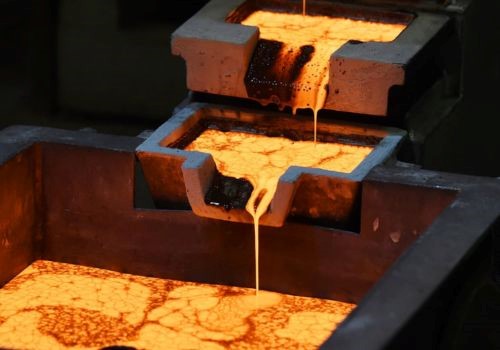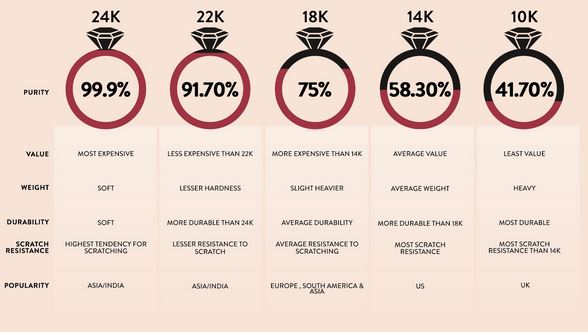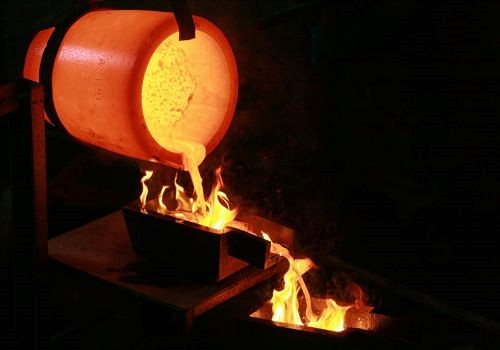Understanding the melting temperature, factors affecting melting point and how to melt gold is critical in many industries. Remember, gold is a precious metal that find use in many industries – from jewelry to electronics.
In this guide, you are going to learn all the fundamental concept on gold melting temperature.
What is the Melting Point of Gold?

Gold melts at 1064°C (1947°F). At this temperature, the gold changes its state from a solid to a liquid state.
You should also note that the temperature 1064°C, is only the melting point of gold in Celsius. At times, you may wish to express gold melting temperature in other units such as:
- Melting point of gold in Kelvin – 15K
- Melting point of gold in Fahrenheit – 1947°F
Factors Affecting the Melting Point of Gold
The following factors might have an impact on gold’s melting point:
Purity:
At 1064°C (1947°F), pure gold melts. The melting point might be decreased by alloying components or imperfections. For example, alloys composed of gold, such as those utilized in jewelry, normally melt at lower temperatures.
Pressure:
Distinct levels of pressure can affect the melting point of gold. In general, the melting point gets higher with rising pressure and reduces with decreasing pressure.
Particle Size:
Unlike bulk gold, gold particles might possess various melting temperatures at the nanoscale. Because of their greater surface-to-volume ratio, nanoparticles tend to have lower melting points.
Chemical Environment:
The presence of certain chemicals can alter the melting point. For example, reactive gases or fluxes used in metallurgical processes can affect the temperature at which gold melts.
Structural Defects:
The presence of dislocations, grain boundaries, and other structural defects in gold can influence its melting behavior, potentially lowering the melting point.
Why is Knowing the Melting Point of Gold Crucial?

Here are some of the reasons why knowing the melting point of gold is crucial:
Ensuring Precision in Manufacturing: For instance, if you are in the electronics business or selling jewelry you have to know that the melting point of gold is 1064 °C so as to cast and mold for the best products in the market.
Maintaining Quality Control: This means that as a manufacturer you have to make sure that there is no flaw in the products that you are manufacturing. Knowing the melting point you are capable of not altering the form and quality of gold during the manufacturing process.
Creating Alloys: When going to make gold alloys it will be relevant to know its melting point. It allows for the blending of the gold with other materials at the right temperatures thereby allowing for the required qualities such as higher strength or color tone to be achieved.
Efficient Recycling: In recycling, the melting point allows you to melt and purify gold, and the scrap gold is recycled and made again into usable material and this is done without compromising quality.
Advancing Scientific Research: If you are a researcher this is quite helpful in understanding how gold behaves under certain conditions thus creating progress in material science and chemistry.
How Gold Melting Temperature Compare to Other Metals
The melting temperature of gold is about 1064°C (1947°F). You will eventually notice gold’s melting point differs compared to other metals because of its distinct molecular structure:
- Copper
The melting temperature of copper is approximately 1085°C (1984°F), whereas the melting temperature of gold is a bit lower compared to that of copper.
- Silver
Silver melting point is approximately 961°C (1763°F), whereas gold has a greater melting temperature compared to silver.
- Iron
The approximate melting temperature of iron is around 1538°C (2800°F), whilst gold melts at a lower temperature compared to iron.
- Aluminum
The approximate melting temperature of aluminum is around 660.3°C (1221°F), whilst gold melts at a significantly higher temperature than that of aluminum.
Titanium melts at a temperature of around 1668°C (3034°F), while gold’s melting temperature is much lower than that of titanium.
- Platinum
The melting temperature of platinum is approximately 1768°C (3215°F), while gold melts at a much lower temperature than platinum.
Melting Temperature of Different Gold Grades

The approximate melting points for popular gold grades are given below:
- 24Karat Gold: Pure gold (99.9% gold) possesses a melting point is approximately 1,064°C (1,947°F).
- 22Karat Gold: Comprises 91.7% gold and 8.3% other metals normally copper and silver. The melting point is from about 1,060°C (1,940°F) to 1,063°C (1,945°F).
- 18Karat Gold: Consists 75% gold and 25% other metals usually copper, silver, zinc, or nickel. The melting point normally ranges between 920°C (1,688°F) and 980°C (1,796°F).
- 14Karat Gold: Contains 58.3% gold and 41.7% other metals. The melting point is around 810°C (1,490°F) to 900°C (1,652°F).
- 10Karat Gold: Comprises 41.7% gold and 58.3% other metals. The melting point ranges from 740°C (1,364°F) to 830°C (1,526°F).
How to Melt Gold
You can melt gold safely and efficiently as follows:

Preparation:
- Safety First: Wear your protection gear to guard yourself from heat and molten metal.
- Work Area: Ensure that your working environment has adequate ventilation and is free from items that can easily catch fire.
Setting Up the Crucible:
- Put your gold pieces in the crucible. In cases where you are using scrap gold then make sure that the gold is clean from other elements and materials.
- Pour in a small amount of flux, preferably borax into the crucible. Flux aids in purification because it reduces the chance of gold adhering to the crucible wall.
Heating:
- Using a Furnace: Heat the furnace to the melting point of the gold (1924°F or 1064°C for pure gold). Put the crucible in the furnace and let it heat up slowly to allow the gold to melt.
- Using a Torch: When using a propane torch, direct the flame towards the gold in the crucible. Rotate the torch so as to heat the gold across and through it until it becomes molten.
- Using an Induction Heater: Melt the gold as per the guidelines of the manufacturer using electromagnetic induction.
Melting Process:
- Observe how the gold is heating up. It will first become pasty, then turn into thick, free-flowing liquid.
- Hold a heat-proof rod, and agitate the gold gently to help the metal get melted properly and other unwanted material float on top.
Removing Impurities:
- Using a metal skimmer or any similar tool, remove any impurities (slag) that float on top of the molten metal.
Pouring the Molten Gold:
- After it has become fully molten and all the unwanted substances have floated on the surface, remove the crucible from the source of heat using tongs.
- Cast the molten gold to the required form by pouring it into another heated mold to make bars, ingots, etc.
Cooling:
- Let the gold cool and get stiff in the mold. This process may take anything from a few minutes to several hours based on the size of the mold and the surrounding heat conditions.
- After the solid gold has become cool, take it out of the mold.
Finishing:
- Check the solidified gold against the impurities and generally evaluate for any possible defects.
- Polish or further refine the gold as may be required depending on its intended usage.
How Melting and Boiling Point of Gold Compare
The melting point of gold is about 1,064 ° C, 1,947 ° F. This is the temperature at which the gold goes from a solid phase to a liquid phase. Whereas the boiling point of gold is about 2,856 ° C (5,173 ° F). At this much higher temperature liquid gold changes to gaseous form.
The melting point that can readily be attained by using normal high-temperature apparatus is essential in the processes of manufacture and casting. Also, in alloying and the refining of metals.
However, the boiling point is much higher; it takes a lot more energy and is not seen as frequently in everyday kinds of processes. The boiling point is mainly required for scientific purposes as well as specialized uses.
Purpose of Melting Gold
- Melting gold refines the gold by removing any impurities and allowing the gold to be recycled.
- It makes it possible to cast the gold into shapes. It supports the formulation of alloys.
- It contributes to manufacturing processes in the electronics, jewelry and medical fields.
How to Reduce the Melting Point of Gold
To lower the melting point of gold, place it in another metal which can be copper, silver, or zinc. This forms an alloy of gold having a melting point lower than that of the original gold.
Conclusion
Note that in order to guarantee specific regulation for a range of industrial and artisanal purposes, it is important to know gold’s melting point. That is during the refining, recycling, alloying, and manufacturing procedures.




